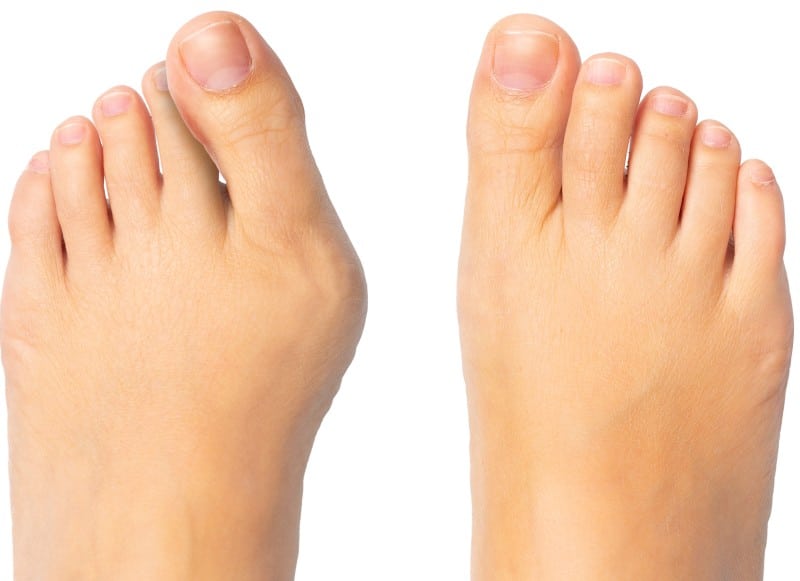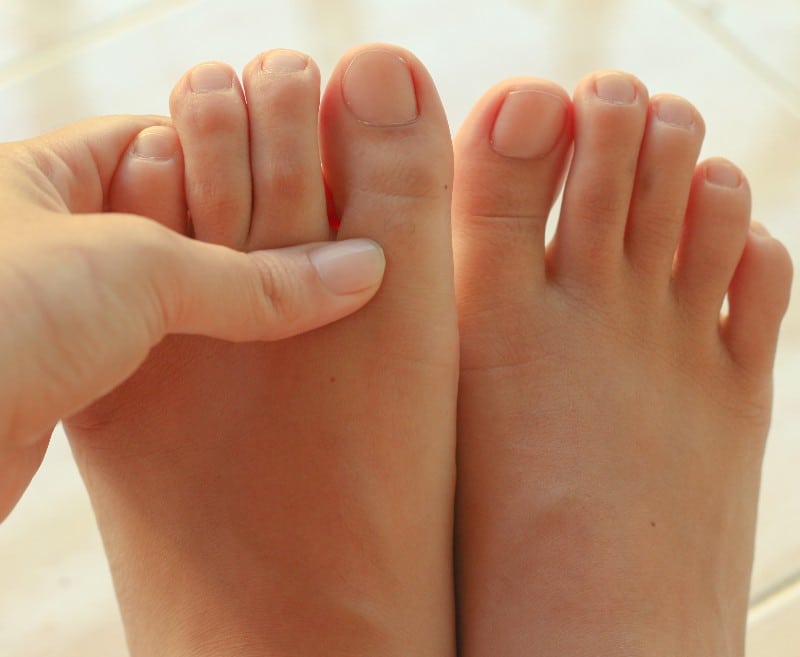Big Toe Pain
Until there’s a problem, you probably don’t think too often about how much you actually rely on your big toes. When an issue does develop—especially if it’s an injury or condition causing painful symptoms— it becomes rather obvious that you use this specific area of the foot every time you push off the ground when taking a step.
When this happens the natural starting point in resolving the problem is to determine what is happening.
With that being the case, why do you have big toe pain?
Well, there are a couple of different possibilities. Let’s take a look at some of them, but keep this in mind:
If you are having foot issues—including ones that cause toe pain—your first step should be to seek professional diagnosis and care. Sure, we’re providing some guidelines as to what might be wrong, but this is not a substitute for actually coming to see us at our Richardson office and getting a proper diagnosis and treatment plan!
Bunions
To start by clearing up a common misconception, bunions are not caused by women’s footwear. Yes, stilettos and pumps are often blamed for causing the big toe to angle inward—which makes sense due to the pointy fronts of those kinds of shoes and the extra pressure they place on the forefeet—but the truth of the matter is that they’re more likely to exacerbate an existing problem than be the source.
The actual root cause for a bunion is often genetic in nature. This is frequently an inherited condition, one where foot structure and/or abnormal biomechanics can play a significant role.
The five long bones in each foot are known as your metatarsal bones, and they run lengthwise and lead up to your toes. The bones in your toes are referred to as phalanges. Accordingly, the joints where these bones meet are called metatarsophalangeal (MTP) joints.
The MTP joint for your big toe is where a bunion develops. An uneven distribution of pressure caused by various factors leads to instability in the joint and its supporting tendons. The result of this is a big toe that points inward and the components of the joint are molded into a hard knob that protrudes beyond your foot’s natural shape.
Abnormal biomechanics from an inherited foot type—particularly a flatfoot condition—can lead to the pressure necessary to create a bunion. Foot injuries, congenital deformities, and neuromuscular disorders are other potential root causes. Additionally, foot or ankle arthritis pain can force someone to alter the way he or she walks, thereby making it more likely for that person to develop a bunion.
Bunions are progressive in nature—and this means we may be able to treat symptoms with conservative care, but it will take surgical intervention to actually restore the joint to its normal position and functionality. Also, this “progressive” label means the deformity will continue to worsen when left untreated.
Taking all that into consideration, early intervention is best when it comes to bunion treatment. If you become aware of this issue, please come see us at the earliest possible opportunity so we can take measures to spare you pain and difficulty!

Gout
The holiday season is definitely upon us now. This means it’s the time for many different activities, like decorating and baking, shopping and wrapping, and talking about gout.
Wait, talking about gout?
Yep, you heard that right! We need to talk about this arthritic condition during the holiday season—particularly because this is the time of year where we all face dietary temptations on a virtually daily basis.
That’s a significant consideration because gout is very much related to food and dietary choices.
Before we go further, let’s take a moment and clarify exactly what gout is and how food plays a role in this particular form of arthritis.
To start, we should clear up a common misconception – arthritis is not a single disease. The condition people typically associate with the word is actually osteoarthritis (which can be thought of as the “wear and tear” variety that develops over time). Osteoarthritis might be the most common form, but there are many types, including gout.
Essentially, gout develops in response to a byproduct of food breakdown within the body. When you eat foods or drink beverages containing substances known as purines—and most food products do contain purines (just to varying levels)—your body breaks them down and creates something called uric acid. This is completely natural, and the uric acid is typically flushed out during urination.
Problems arise, however, when either too much uric acid is produced, or the body has trouble removing it effectively. In these cases, the uric acid remains in the bloodstream, but will ultimately start settling into joints. Over time, the uric acid builds up and crystalizes. These urate crystals have sharp, pointed edges that can cause pain and irritation in soft tissues.
Most of the time, the uric acid has settled into the MTP joint at the base of the big toe. As such, symptoms are frequently experienced in the area.
Gout causes periodic flares of sharp pain, and these flares can be related to the food products you eat. As such, both a treatment and prevention practice for gout is to eat foods that are low in purines and to drink plenty of water (to flush the uric acid out of the system).
Since meats, seafood, sugar, refined carbohydrates, and beer promote high levels of uric acid that can trigger a gout attack, you need to make changes to your diet. Now, you may think that a lot of tasty options have been eliminated with those dietary restrictions, but you can use whole grains, veggies, fruit, legumes, beans, and fat-free or low-fat dairy to make delicious meals.
In some cases, you may need prescription for medication that either helps by either improving uric acid removal or blocking its production.
Turf Toe
Turf toe is an injury wherein the ligaments in your big toe have become excessively stretched when your toe extends beyond its intended range of motion. This can happen when you plant your forefoot in the ground—often with an athletic shoe that features spikes or cleats—but the rest of your foot keeps moving forward.
That kind of motion can bend the big toe back further than it is supposed to go—and that’s a problem.
Whereas this injury is commonly associated with football and baseball, another activity that has a heightened risk for turf toe is dancing—and especially ballet. (Dancers tend to spend a lot of time on their toes.)
The most common turf toe symptoms include swelling, pain, and limited joint movement in the base of the big toe. Sometimes the condition is caused by overuse or repetitive actions, in which cases the symptoms often have a gradual onset and worsen slowly over time. When the injury is direct, symptoms are more likely to have a sudden appearance and will worsen over the following 24 hours.
No matter the cause and symptoms exhibited, it is important to come see us here at Richardson Podiatry Center for a proper evaluation and treatment.
The turf toe treatment plan we create will be based on the severity of the injury. There are basically three grades (1-3) of turf toe injuries, with Grade 3 being the most severe.
For a Grade 1 sprain, we may recommend RICE (rest, ice, compression, elevation), taping, and medication. Grade 2 sprains will be treated with similar methods, but also the possible use of a boot to immobilize the affected joint and an extended period of rest. When it comes to Grade 3 cases of turf toe, we will likely need to provide additional immobilization and may consider surgery (in rare instances).

Other Sources of Big Toe Pain
Some of the other reasons you might experience pain in a big toe include:
Ingrown toenails. Any toenail could potentially become ingrown, so why include this in a blog post about big toe pain? Put simply, because it’s most often a big toe’s nail that is affected.
Feel free to check out this page if you’d like more information on ingrown toenails!
Hallux limitus. As with a bunion, this condition develops in the joint located at the base of the great toe—the metatarsophalangeal (MTP) joint. In this case, though, the problem doesn’t happen on the horizontal plane. Whereas a bunion will cause the MTP joint to be pushed out to the inner edge of the foot, hallux limitus causes a reduced range of motion in the vertical plane.
Conservative care options for hallux limitus include RICE therapy, stretches, orthotics, special footwear, and pads.
Hallux rigidus. This is the next progression if hallux limitus goes untreated and becomes more severe. In this case, the degenerative arthritic condition is more likely to need surgical intervention than with hallux limitus. That being said, we will attempt conservative treatment first and keep surgery as more of a “Plan B” option.
Phalangeal fracture. Dropped something heavy on the front of your foot and now you have severe pain in your big toe? A definitive answer requires proper diagnostic imaging, but the likely culprit is a broken bone in the digit. If this is the case, we will take appropriate measures to stabilize the bone so it can heal in a natural manner.
Comprehensive Foot Care in Richardson
As we noted earlier, this post will give you guidelines as to what might be causing your big toe pain, and you can probably pick up some tips you might be able to use at home as well. At the end of the day, though, your best course of action is to come see us.
Why?
Because we have a variety of diagnostic tools and techniques to determine exactly what is wrong with your toe. More than that, we will create a customized treatment plan based on the injury/condition and your specific circumstances and lifestyle goals.
Don’t live with toe pain—contact us today and request your appointment! Simply give us a call at (972) 690-5374 and one of our team members will be happy to help you.
